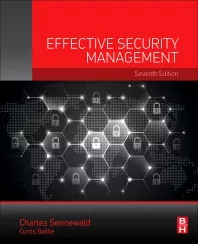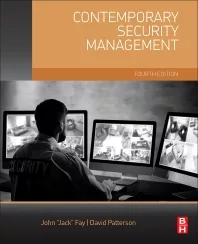Selecting the right mobile incident management solution
.webp?t=1707504699)
Image via Unsplash
A security threat can happen anywhere and at any time. That means flexible security solutions are a must when trying to keep people and operations safe. However, many organizations limit their ability to respond to a threat by selecting solutions that keep security personnel tied to a desk or restrict access, which narrows a tool’s usefulness. Mobile security solutions offer the ability to manage situations from anywhere, but in a crowded marketplace, it can be difficult to understand what to look for to address an organization’s needs.
A mobile solution requires an app team members can access from their mobile devices. This is the first step in expanding access broadening an organization’s ability to respond to incidents from anywhere. With a mobile app, people do not need to get to their desktops to start reporting the incident to others, which can save crucial seconds or in some cases minutes in getting the word out and sending help to those in need. When an emergency occurs, every moment counts, so the quicker organizations can respond the better chance they have of mitigating the impact of an event.
Having an app is one thing, but what that app can do is another. Too often, organizations select single-use solutions that address specific needs. While it is good to be aware of the challenges an organization may encounter, having a unique solution for each issue is rarely effective. Needing to activate multiple apps to complete specific tasks can be time-consuming and cumbersome. And the more apps an organization needs, the more likely it is someone forgets to activate one, which may put others at risk. The more an app can do, the more value it can bring to an organization’s security strategy by enabling them to alert, manage, and respond to incidents from a single interface.
To do that, a mobile security solution needs to be flexible. That starts with being able to build custom messages for whatever kind of crisis an organization may face. Whether it’s an active shooter, severe weather, medical emergency, or some other crisis, having preloaded messages on a mobile app that are easy to send to others saves time and eliminates the need to come up with appropriate messaging on the fly. With a few simple taps, critical messages can be sent out. A mobile security solution should also give an organization the ability to segment messages to specific audiences. Some emergencies may require alerting an entire organization, while others may only require alerting specific teams, like security, or people in a specific area. Being able to send those messages as SMS text, push notifications, email and audio messages helps organizations deliver information in a way that is most convenient for the recipient while helping ensure that they are doing everything they can to get the message in front of everyone so they receive it quickly.
True flexibility though comes when a mobile solution is also able to integrate with on-premises devices like speakers, digital signage, and desktop computers. Being able to leverage text, audio, and visual alerts that get sent directly to mobile devices and throughout a facility means clear, consistent emergency messages are being communicated to everyone so they can stop what they are doing and take steps to keep themselves safe. Intrusiveness is key, and the more an organization can leverage a solution to ensure messages can’t be ignored, the faster they can spur people to action.
Once alerts have been sent, a mobile security solution should also empower stakeholders to actively manage an incident as it unfolds. This includes viewing real-time insights like responses from other members to understand who needs assistance and who is safe. It can also include the ability to access vital resources like floor plans to understand where an incident has occurred and how to best direct a response. Once an event has ended, a mobile security solution should also help organizations resume normal operations. Being able to send an “All Clear” message from a mobile app helps inform people that danger has passed the moment an issue has been resolved.
Of course, not everyone within an organization needs to be able to send emergency alerts or manage an incident, but everyone should have the ability to request help should they need it. Mobile security solutions that offer panic button capabilities can be especially valuable for organizations looking to provide individualized protection for their people. With a panic button on their phone, individuals can request help wherever they are. This can be particularly useful for large organizations that have sizable properties and parking lots that workers may need to access that otherwise do not have easily accessible safety resources. With the right tool, when a mobile panic button is activated, security teams can receive an alert with the individual’s name and location so they can send immediate help. The person who activated the panic button can connect directly with the security team via a phone call to speak with someone about the situation they are experiencing until help arrives.
Organizations looking to invest in mobile security solutions need to have a clear vision of what issues they want to address. Mobile security solutions allow key stakeholders to go where they are needed, assess situations firsthand, and collaborate on a response with others while still being connected to others to stay on top of ongoing crisis events. Ultimately, a mobile security solution should make stakeholders' lives easier and responses more efficient when incidents occur.
Looking for a reprint of this article?
From high-res PDFs to custom plaques, order your copy today!







